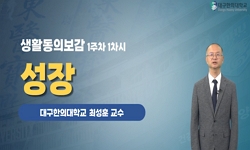일본 무도의 성립에 도교 그중에서도 노장사상과 연단술이 깊은 영향을 미쳤고, 특히 이 같은 사상이나 기법과 관계된 무도 全書流가 존재한다는 것은 일본 무도의 폭이 유불도 삼교를 망라...
http://chineseinput.net/에서 pinyin(병음)방식으로 중국어를 변환할 수 있습니다.
변환된 중국어를 복사하여 사용하시면 됩니다.
- 中文 을 입력하시려면 zhongwen을 입력하시고 space를누르시면됩니다.
- 北京 을 입력하시려면 beijing을 입력하시고 space를 누르시면 됩니다.
https://www.riss.kr/link?id=A60108507
- 저자
- 발행기관
- 학술지명
- 권호사항
-
발행연도
2005
-
작성언어
Korean
-
주제어
천진전병법 ; 동의보감 ; 신선환단법 ; 단전호흡법 ; 최상의 도 ; Taoism ; Japanese Budo ; Tenshindenheiho ; Dogashu
-
등재정보
KCI등재후보
-
자료형태
학술저널
- 발행기관 URL
-
수록면
309-349(41쪽)
-
KCI 피인용횟수
3
- 제공처
-
0
상세조회 -
0
다운로드
부가정보
국문 초록 (Abstract)
1. 천진전병법의 핵심사상인 연단술은, 천진(天眞)이란 원기(元氣)를 단전에 응결시키는 기법으로, 그 방법은 단전호흡에 내관법(內觀法)을 겸하여 수련하는 것이다. 기법의 근원은 백은의 『夜船閑話』에 보이는 신선환단법에 의거한다. 신선환단법의 기원은 조선조 名醫인 허준이 지은 『동의보감』에 있다. 『야선한화』의 성립에는 『동의보감』이 중요한 역할을 담당하였다. 따라서 『동의보감』에 보이는 단전호흡, 팽조의 조식법 등은 그대로 『야선한화』에 인용되어 있어, 시라이의 천진전병법의 기초적인 수련법이 되었을 것이라 추정된다.
3. 모든 道의 기본이 몸의 기술로부터 시작되고 출발한다는 사상은 장자의 사상이다. 道만을 입으로 부르짖어서는 몸 없는 관념, 신체 없는 정신만의 것이 되고 만다. 몸의 기술을 극한에까지 끌어올리지 못하면 도에 들어갈 수가 없다. 최상의 도는 몸의 기술이 마음과 일치되어 무위의 경지에 이르러서야 완성된다.
4. 도가사상과 무도에 관한 연구는 무도의 종주국인 일본에서도 아직 그 분명한 관계가 밝혀지지 않고 있다. 무도의 목적, 무예사상 등이 도가 사상에 직접 연결되어 발전, 전개되는 과정은 금후의 과제가 될 것이다.
일본 무도의 성립에 도교 그중에서도 노장사상과 연단술이 깊은 영향을 미쳤고, 특히 이 같은 사상이나 기법과 관계된 무도 全書流가 존재한다는 것은 일본 무도의 폭이 유불도 삼교를 망라하는 광범한 체계를 구축하였음을 알게 한다. 이 연구는 이들 무도전서에 보이는 도가사상을 고찰한 것이다. 그 결과는 다음과 같다.
1. 천진전병법의 핵심사상인 연단술은, 천진(天眞)이란 원기(元氣)를 단전에 응결시키는 기법으로, 그 방법은 단전호흡에 내관법(內觀法)을 겸하여 수련하는 것이다. 기법의 근원은 백은의 『夜船閑話』에 보이는 신선환단법에 의거한다. 신선환단법의 기원은 조선조 名醫인 허준이 지은 『동의보감』에 있다. 『야선한화』의 성립에는 『동의보감』이 중요한 역할을 담당하였다. 따라서 『동의보감』에 보이는 단전호흡, 팽조의 조식법 등은 그대로 『야선한화』에 인용되어 있어, 시라이의 천진전병법의 기초적인 수련법이 되었을 것이라 추정된다.
3. 모든 道의 기본이 몸의 기술로부터 시작되고 출발한다는 사상은 장자의 사상이다. 道만을 입으로 부르짖어서는 몸 없는 관념, 신체 없는 정신만의 것이 되고 만다. 몸의 기술을 극한에까지 끌어올리지 못하면 도에 들어갈 수가 없다. 최상의 도는 몸의 기술이 마음과 일치되어 무위의 경지에 이르러서야 완성된다.
4. 도가사상과 무도에 관한 연구는 무도의 종주국인 일본에서도 아직 그 분명한 관계가 밝혀지지 않고 있다. 무도의 목적, 무예사상 등이 도가 사상에 직접 연결되어 발전, 전개되는 과정은 금후의 과제가 될 것이다.
다국어 초록 (Multilingual Abstract)
1. Tenshin is a technique of concentrating vitality in abdomen. this is for training abdominal breathing technique and introspection technique at the same time. The origin of this technique is a Taoist alchemy that appeared Hakuin's Yashenganna. Among the main reference works of Yashenganna is Donguibogam that Heo Joon wrote during Chosun dynasty. From this we can conclude that Donguibogam played an important role in the formation of Yashenganna. Therefore, the abdominal breathing technique, Pengtzu's deep breathing, and so on that were written in Donguibogam were quoted in Yashenganna leading us to surmise that it might have become the basic training method of Shirai's Tenshindenheiho.
2. Tao is the ultimate reality in this world. If we have hard training of sword technique with all my heart we should be can reach that Tao. Tao is not same the sword technique, but the sword technique is the key of the Tao. To get the Tao we do our best. We train with all our's might to reach highest level of technique. Just the Tao is that our mind to get the highest level of sword technique. Tao is meant for disciplining oneself and attaining virtues which is humanity, loyalty, courtesy, wisdom and trust. The man who attaining virtues trains with all his might to reach highest level of technique should obtain the tao of the sword.
3. The studies about the Taoism and Budo have not succeeded in establishing relation between the two even in their originating country, Japan. It will be the subject of future studies to reveal the process in which the goal of Budo, the ideas of martial art and so on, were directly linked to the Taoism.
This paper is intended to explore the Taoism on the idea of the Japanese Budo that is conceived and accomplished by martial artists. Bibliographical method was adopted to analyze the book of Heihomichishirube, Dogashu, Inakashoji printed by Tokyo Copy...
This paper is intended to explore the Taoism on the idea of the Japanese Budo that is conceived and accomplished by martial artists. Bibliographical method was adopted to analyze the book of Heihomichishirube, Dogashu, Inakashoji printed by Tokyo Copy Press in Japan and advised by Watanabe.
1. Tenshin is a technique of concentrating vitality in abdomen. this is for training abdominal breathing technique and introspection technique at the same time. The origin of this technique is a Taoist alchemy that appeared Hakuin's Yashenganna. Among the main reference works of Yashenganna is Donguibogam that Heo Joon wrote during Chosun dynasty. From this we can conclude that Donguibogam played an important role in the formation of Yashenganna. Therefore, the abdominal breathing technique, Pengtzu's deep breathing, and so on that were written in Donguibogam were quoted in Yashenganna leading us to surmise that it might have become the basic training method of Shirai's Tenshindenheiho.
2. Tao is the ultimate reality in this world. If we have hard training of sword technique with all my heart we should be can reach that Tao. Tao is not same the sword technique, but the sword technique is the key of the Tao. To get the Tao we do our best. We train with all our's might to reach highest level of technique. Just the Tao is that our mind to get the highest level of sword technique. Tao is meant for disciplining oneself and attaining virtues which is humanity, loyalty, courtesy, wisdom and trust. The man who attaining virtues trains with all his might to reach highest level of technique should obtain the tao of the sword.
3. The studies about the Taoism and Budo have not succeeded in establishing relation between the two even in their originating country, Japan. It will be the subject of future studies to reveal the process in which the goal of Budo, the ideas of martial art and so on, were directly linked to the Taoism.
목차 (Table of Contents)
- 【국문요약】
- Ⅰ. 연구의 목적
- Ⅱ. 연단술과 검의 수행
- Ⅲ. 術이 바로 道라는 것에 관해
- Ⅳ. 결론
- 【국문요약】
- Ⅰ. 연구의 목적
- Ⅱ. 연단술과 검의 수행
- Ⅲ. 術이 바로 道라는 것에 관해
- Ⅳ. 결론
- 【참고문헌】
- 【Abstract】
참고문헌 (Reference)
1 이진수, "일본무도의 연구" 서울: 교학연구사 1999
2 "朝鮮後期 養生思想에 관한 硏究 도교의 한국적 수용과 전이" 아세아문화사 1994
1 이진수, "일본무도의 연구" 서울: 교학연구사 1999
2 "朝鮮後期 養生思想에 관한 硏究 도교의 한국적 수용과 전이" 아세아문화사 1994
동일학술지(권/호) 다른 논문
-
- 한국도교문화학회
- 서대원(徐大源)
- 2005
- KCI등재후보
-
- 한국도교문화학회
- 이봉호(李奉鎬)
- 2005
- KCI등재후보
-
- 한국도교문화학회
- 오상무(Oh Sang-Mu)
- 2005
- KCI등재후보
-
- 한국도교문화학회
- 徐信惠(Seo Shin-Hye)
- 2005
- KCI등재후보
분석정보
인용정보 인용지수 설명보기
학술지 이력
| 연월일 | 이력구분 | 이력상세 | 등재구분 |
|---|---|---|---|
| 2027 | 평가예정 | 재인증평가 신청대상 (재인증) | |
| 2021-01-01 | 평가 | 등재학술지 유지 (재인증) |  |
| 2018-01-01 | 평가 | 등재학술지 유지 (등재유지) |  |
| 2015-01-01 | 평가 | 등재학술지 유지 (등재유지) |  |
| 2011-01-01 | 평가 | 등재학술지 유지 (등재유지) |  |
| 2009-01-01 | 평가 | 등재학술지 유지 (등재유지) |  |
| 2006-01-01 | 평가 | 등재학술지 선정 (등재후보2차) |  |
| 2005-01-01 | 평가 | 등재후보 1차 PASS (등재후보1차) |  |
| 2004-01-01 | 평가 | 등재후보 1차 FAIL (등재후보1차) |  |
| 2003-01-01 | 평가 | 등재후보학술지 선정 (신규평가) |  |
학술지 인용정보
| 기준연도 | WOS-KCI 통합IF(2년) | KCIF(2년) | KCIF(3년) |
|---|---|---|---|
| 2016 | 0.57 | 0.57 | 0.6 |
| KCIF(4년) | KCIF(5년) | 중심성지수(3년) | 즉시성지수 |
| 0.54 | 0.5 | 1.665 | 0.08 |





 DBpia
DBpia






